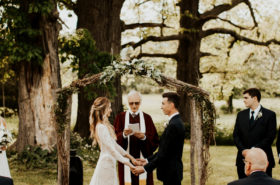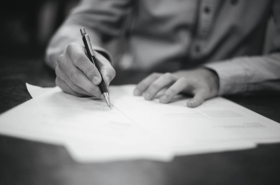Likely if you have a wedding planner or a day-of wedding planner, this post will be useless to you because they will know what to do and will lead the whole thing. This post is more for the DIY-brides of the world who are doing everything themselves.
The other person that might run this for you is the wedding ceremony venue coordinator. If you get married at a church or venue, there will likely be someone there that runs through the process with you and your officiant.
Here’s who needs to be at the rehearsal itself (extra people often make it more difficult to get through, so don’t forget people can go to just the dinner afterwards and don’t need to witness the actual rehearsing):
- the couple getting married
- the officiant
- the bridesmaids
- the groomsmen
- all readers and people who have a role in the ceremony
- the parents of the couple
- the grandparents of the couple
- anyone else you plan on having process into the ceremony
- *if applicable: wedding planner and venue coordinator
Things to bring with you to the rehearsal:
- the readings, copy of vows, etc.
- the wedding license (if there’s a safe place to keep it overnight)
- the unity candle and stand (if applicable)
- any “reserved” signs (if applicable)
- the order for the service
- the order for the procession
One thing I would suggest is maybe having someone run this for you at both the rehearsal and the day-of. You’ll need to rehearse yourself, so maybe you can make a plan with someone in advance who can lead everyone in learning their roles and cue everyone in.
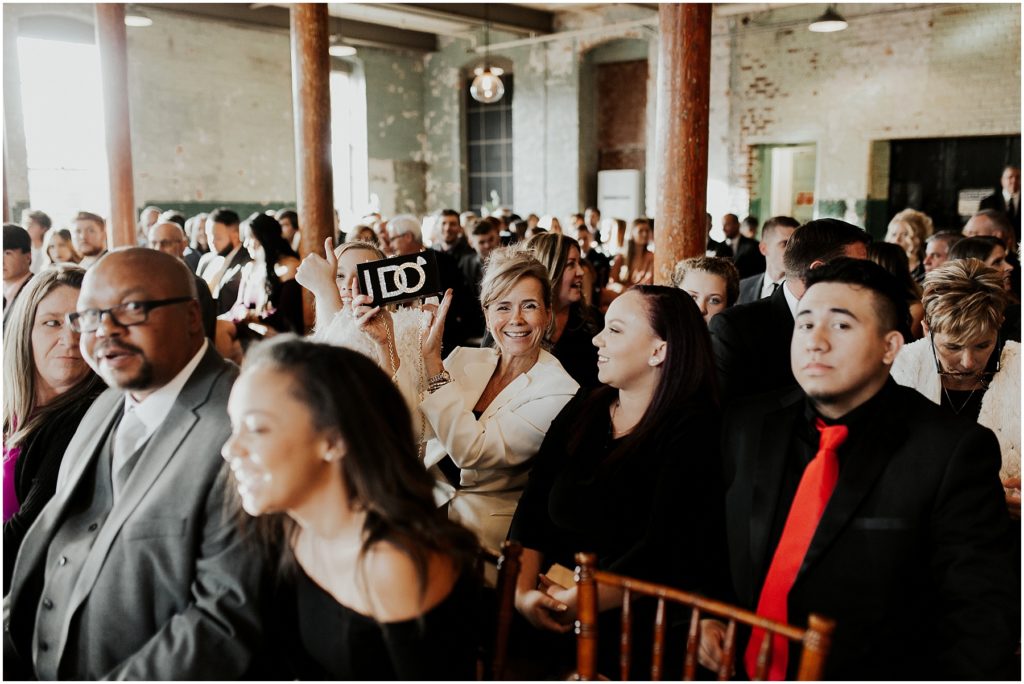
1. Who is processing in before the bridal party
There are some traditional ways of doing this including letting grandparents, parents and potentially even siblings come in while the music is playing and everyone is patiently awaiting the bride’s entrance. You can totally do it however you’d like (or not do it at all). Below is graphic from Ceremony Officiants with some traditional suggestions.
2. Who is lighting the unity candle and when
Again, this is totally optional, but if you’re doing it it’s something to practice. For example, we had both of our moms process in together with individual lit candles that they then used to light our unity candle. It symbolizes the joining of families and was pretty cute! These participants just need to practice how they get the candles, when they process in and where they go after that.
3. Where these people will sit (and where “reserved” signs will be placed in the mean time)
Once these family members process in, they need to know where their seats are. Same applies for the bridal party and even the bride and groom themselves. It’s important to have all of this established so that the coordinator, planner or designated family member can make sure the seats are set up and marked as “reserved” so some random coworker doesn’t steal Grandma Judy’s seat.
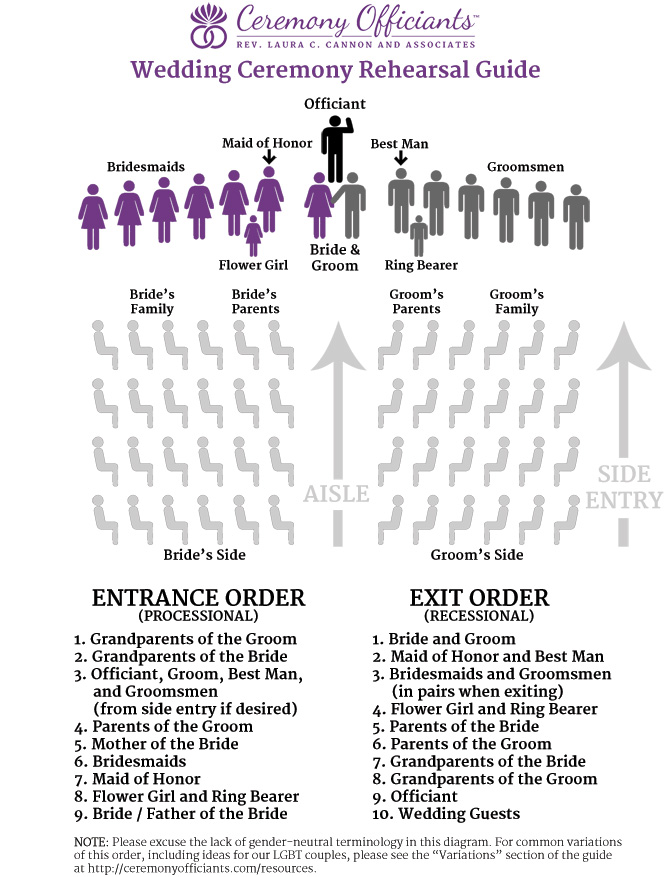
4. How the bridal party is processing in
There are a lot of variations possible for the bridal party’s entrance. You can the groom and groomsmen walk from the side of the altar or service area and just stay standing instead of coming up the aisle. You can also have everyone come up the aisle except for the groom (each bridesmaid walking with a groomsman). There is no right way to do this, but it’s just something to have solidified and practiced multiple times during the rehearsal. Make sure everyone is certain of their partner and their order of processing. It’s also good to have this written down for the person cue-ing in the bridal party.
The other part of processing is to coordinate how they’re holding onto each other, how they’re holding their bouquets and at what point they leave the back of the venue and start heading up the aisle. Finally, once they get up to the front of the aisle, do they need to bow? How do they separate and go to their respective spots? Inform them and then make sure it gets practiced at least 2-3 times.
The bride and whoever is walking her down the aisle is also privy to all of this. They need to practice their entrance (and find out when and how, if staying hidden from the groom and guests is important). You’ll also want to practice the hand off. Does the father kiss his daughter on the cheek before handing her over? Does the groom give his father-in-law a hug? Decisions on this in advance help it look less awkward and more sweet.
5. Where they stand at the front
This is especially important for the first and last bridesmaid and groomsman in the line. You want to make sure they know where they should be standing and that everyone knows how much space to keep between them. You can also talk about where they should be facing. All of this just keeps it symmetrical and makes the photos look good. If there’s not an obvious marker for them to use, don’t be afraid of putting some tape on the floor to help them out.
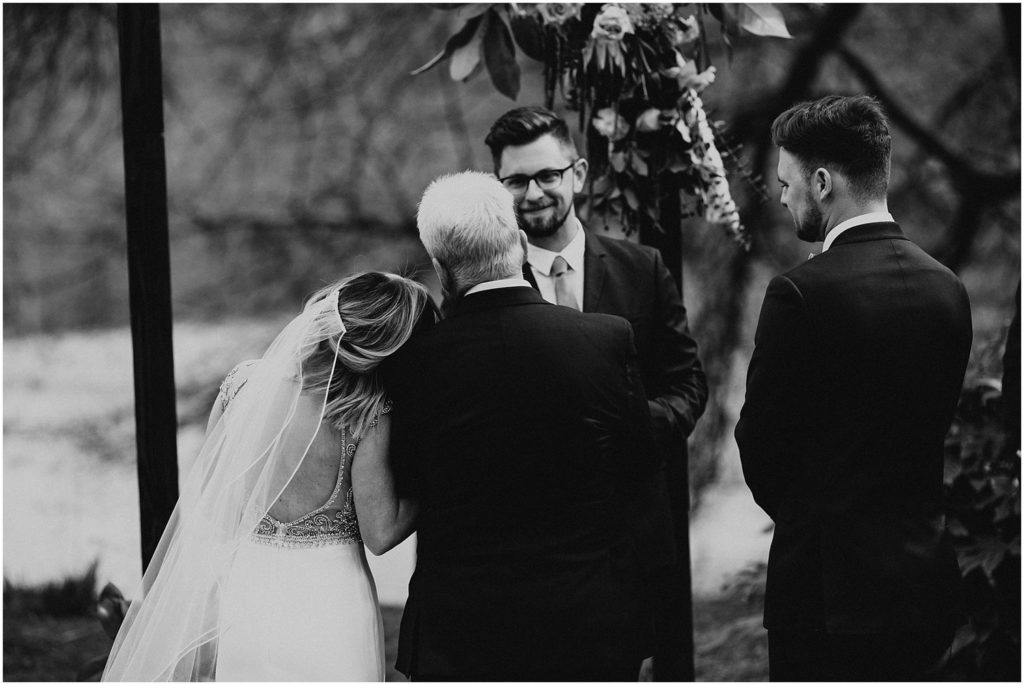
6. When bridal party returns to their seats and where their seats are
Unless it’s a short ceremony and the bridal party is standing the whole time, make sure you go over where their seats are and when they’re returning to them. Just point that out as you go through the order of the ceremony.
The bride and groom also need designated seats and directions on how to best get to their seats (especially if the bride has a long train that is easy to get twisted or hard to maneuver).
7. The basic order of the ceremony
Ceremony orders can be so different depending on whether it’s a religious ceremony or not as well as what traditions are included and excluded. There isn’t much general direction I can give except to say just have it all written down and run through it with the attendees.

8. Where the readers should sit and when they get up to read
As you’re running through the ceremony order, this also the time to direct the readers and let all of them practice. This way they can ask pronunciation questions, learn how to adjust the microphone, etc. I would also suggest to them to sit near the pulpit/front of the ceremony and on an end so shuffling out of their seat isn’t hard to do.
9. The roles of the Maid of Honor and Best Man during the wedding
Usually the Maid of Honor and Best Man have additional roles in the ceremony i.e. giving the officiant the rings, fluffing the bride’s dress, handing the bride her bouquet, etc. You’ll want to practice these as you run through the rehearsal as well (even if the bouquet is invisible). The rings are an especially important part of this practice run. How is the best man getting the rings and when? Who has the rings before the ceremony?
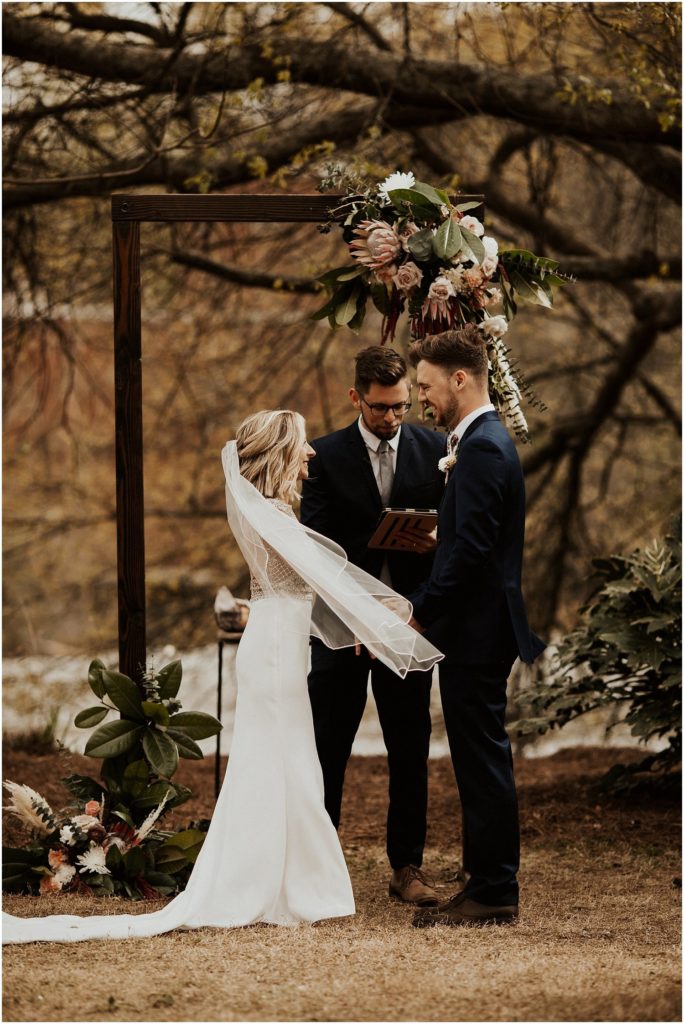
10. How everyone processes out and when
The final thing to practice is how to process out once the ceremony is done. The same things as processing in need to be explained and where they go after the procession should be explained. Sometimes the bridal party can get excited and hang in the front of the church while the rest of the party is still processing. This can get loud and distracting, so just have them all keep going outside and meet at a certain location.
Make sure the next order of business is having the right people sign the license (just so no one forgets to do that). You can also remind the bridal party of when and where they need to be back at in order to process into the reception. Oftentimes, they get to go hang out at the cocktail party during family photos and then need to meet back outside the reception entrance to walk in.



